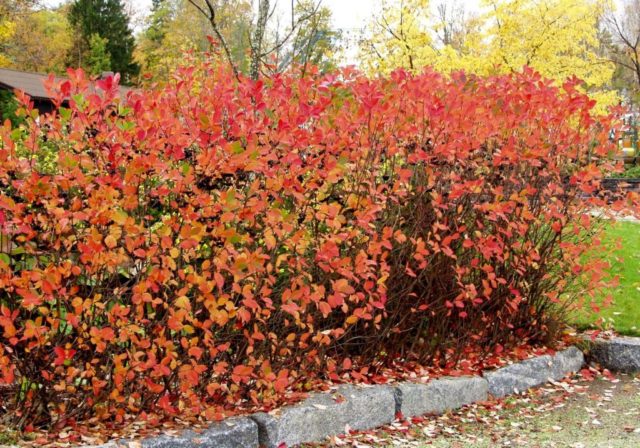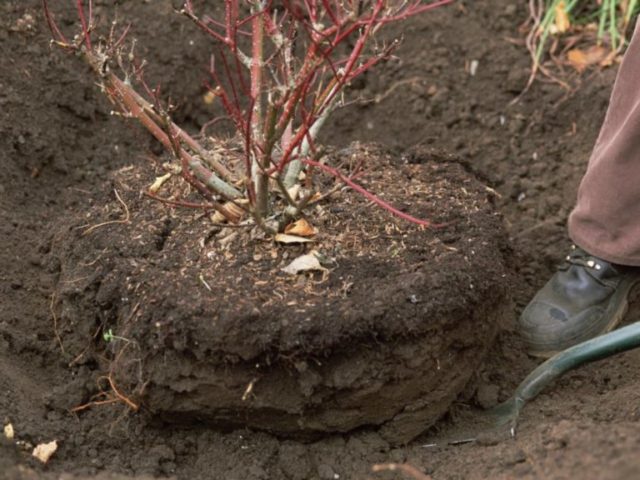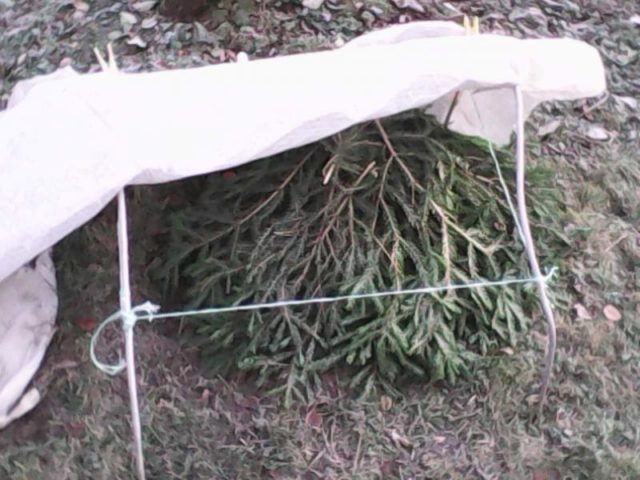Content
Caring for chokeberry in the fall prepares the shrub for winter and lays the foundation for fruiting next year. Life-loving, vigorous chokeberry is one of the crops with guaranteed yield. It is capable of stably setting berries without care, but lack of attention to chokeberry sooner or later affects the health of the bush. The berries become smaller, pests appear, and useless thickets form at the planting site.
How to care for chokeberry in the fall
A set of activities carried out in the garden in the fall is aimed at successful wintering of plants.For chokeberry, the main needs are light and moisture, the absence of harmful insects and diseases. A resilient culture can handle other tasks on its own.
Basic care for chokecherry in the fall:
- Trimming.
- Pre-winter watering.
- Prevention of infections.
- Fertilizer application.
Chokeberry berries ripen late. Depending on the climate, they are harvested from the beginning of autumn until frost. Immediately after picking the berries, care work begins. In areas where chokeberries are already collected from under the snow, all activities must be carried out before harvesting.
Chokeberry does not require specific methods for autumn care. All of them are known to gardeners from other fruit crops. However, each stage has its own characteristics and should be considered in more detail.
How to prune chokeberry in the fall
The main work on the formation and rejuvenation of the bush is carried out in the spring, when it is possible to assess the condition of the plant after wintering. Pruning chokeberry in the fall is guided by other goals.
The vigor of chokeberry growth causes stems and lateral shoots to appear throughout the growing season. By autumn the middle of the bush thickens and stretches upward in search of light. This chokeberry is susceptible to disease; fruits are set only on the side shoots.
You can thin out the plant throughout the season. In summer, if possible, remove thin and thickening shoots that take away the strength of the plant. In the fall, other chokeberry problems that require intervention may be discovered:
- the appearance of leaves affected by infections;
- broken branches, dried shoots;
- areas of burst bark on mature trunks;
- an abundance of root shoots that thicken the bush;
- accumulations of insects seeking to overwinter in the soil.
You need to leave the chokeberry bush over the winter cleaned and thinned. In all of the above cases, pruning is mandatory.
Detailed instructions for planting, caring for, and pruning chokeberries in the fall and spring in a video from an experienced gardener.
When to prune chokeberry: in autumn or spring
Spring is rightly considered the main time for pruning in the garden. Before sap flow begins, chokeberry must be carefully examined and all dead branches removed. Frostbitten areas are shortened to live, green wood. It is also convenient to form bushes in the spring, before the rapid growth of chokeberry begins.
At the end of the season, it is impossible to do without an audit of the plantings. Chokeberry bushes grow strongly by autumn. Thickening and multiplying insects can harm the plant in winter, which will stop the development of the bush when it gets warmer. Fungal infections from branches that were not harvested in time, after overwintering, attack healthy chokeberry stems in the spring.
Sanitary pruning is appropriate at any time. Thickening or diseased chokeberry branches should be cut out immediately after the problem is discovered: in spring, summer or autumn, excluding only the period with sub-zero temperatures.
Pruning chokeberry in the fall for beginners
It is important to prune chokeberries long before frost. Cuts and wounds on branches and trunks should heal or dry out, which will prevent them from freezing. Pruning times vary in different regions. You should focus on the average annual temperatures in a particular area, approximate time: September - October.
The formation of the bush is carried out in the spring. When planting chokeberry in the fall, it is also not recommended to shorten young shoots; this increases their vulnerability to frost and disease. It is better to form overwintered shoots after the snow has melted.
Sanitary pruning in the fall involves removing thin, thickening shoots growing inside the bush. Chokeberry branches affected by diseases are cut out completely. It is advisable to make cuts below soil level. Stumps left above ground often become a haven for insects and a breeding ground for infections.
If there is a need to rejuvenate chokeberry in the fall, cut out no more than half of the skeletal branches. The rest can be shortened. Experienced gardeners recommend radical rejuvenation by completely cutting off the entire bush in the spring.
Treatment of chokeberries in autumn against pests and diseases
Most chokeberry diseases are fungal in nature. They can be treated and prevented with copper-containing compounds. The most common, proven preparation for spraying in the fall is Bordeaux mixture at 1% concentration or copper oxychloride.
Before processing, you should carefully examine the plant, if necessary, remove diseased shoots and dispose of them. A solution of copper sulfate also helps prevent the appearance of chokeberry pests.Such spraying in the fall can be called universal.
The exception is brown mites that parasitize chokeberries. If they are detected, spraying with special acaricidal agents will be required: Karbofos, Kleschevit, Apollo, Tedion.
Cherry sawfly, rowan moth, other beetles, butterflies, which lived in the crown and on fruits all summer, fall to the ground in the fall with fallen leaves. The larvae overwinter in a layer of plant debris or move into the ground. The only way to prevent pests from being carried into the next season is by collecting all the fallen leaves and removing them from the area. The chokeberry is then sprayed and the soil is mulched with uninfected material.
How to plant chokeberry in the fall
Autumn is the most convenient time for planting chokeberry. You can have time to prepare the planting holes, leisurely select seedlings and not worry that unpredictable frosts will destroy the sprouts.
Seedlings that have ripened over the summer are less susceptible to freezing than fresh shoots during spring planting. In autumn, the root system takes root better. Its active development stops only at -4 °C.
To adapt the roots of chokeberry planted in the fall, 20 days before the onset of persistent cold weather is enough. In spring, such a plant wakes up faster and begins to rapidly grow its above-ground part. At this time, spring-planted seedlings are just coming to their senses.
Where is the best place to plant chokeberry in the fall?
Chokeberry grows well in any soil, except highly saline soils. Its root system tolerates high groundwater levels and spring floods well. Therefore, any area with enough sun is suitable for planting in the fall.
Black currants are very demanding when it comes to lighting.In shaded areas, chokeberry can be grown only as an ornamental crop. It will require a lot of light to flower and set fruit.
Planted along the border of the site, from the prevailing winds, chokeberry can serve as protection from drafts for the entire garden or vegetable garden.
Landing dates
The time chosen for work must meet two requirements: not be too warm and not precede frost. By planting chokeberry too early in the fall, when the temperature still rises above +15 °C, you can end up with a developing aerial part rather than roots.
Later, when the air temperature drops more, chokeberry is not inclined to grow branches, but grows its root system. This is especially pronounced if the plantings are mulched in the fall.
Planting dates vary from September to November, vary greatly by region and are selected depending on the climate.
How to plant chokeberry in the fall
To properly plant chokeberry in the fall, you should select and prepare a place in the garden in advance. Planting holes (50*50 cm) are dug in advance to allow the soil to shrink.
The excavated soil is enriched with the addition of humus, wood ash, and superphosphate. Drainage is laid at the bottom of the planting holes: pebbles, crushed stone, broken brick.
The process of planting chokeberries in the fall:
- Water is poured into the prepared holes to ½ volume and wait until it completely goes into the soil.
- A mound of fertile substrate is poured in the center and a seedling is placed on it.
- Having straightened the roots, carefully cover them with soil, avoiding the appearance of voids.
- After spilling water on the seating area, control the subsidence of the soil and add substrate to the edge of the hole.
- The surface can be immediately mulched to retain moisture.
The arrangement of chokeberry in autumn can be arbitrary. The culture tolerates single plantings well. For increased fruiting, maintain a distance of up to 3 m between bushes. As a hedge, chokeberry requires thickening up to 1.5 m and is planted in trenches.
Nuances of landing in the Moscow region and Siberia
Chokeberry grows well throughout Central Russia. The Moscow region is one of the most favorable regions for growing crops. Nevertheless, one should not forget one of the main rules of gardening: choose zoned varieties.
In order not to make a mistake, it is enough to purchase chokeberry from local nurseries. Seedlings grown in similar conditions take root more easily. The most popular chokeberry varieties in the Moscow region: Chernookaya, Viking, Nero, Hugin.
Chokeberry is extremely winter-hardy and can be cultivated as far as the Far North. The varieties zoned for the Urals and Siberia tolerate temperatures down to -20 °C in autumn and -35 °C in winter. The roots can withstand frosts below -10 °C.
At the foot of the Altai Mountains and in Siberia, after planting in the fall, chokeberry seedlings must be mulched, laid on the ground, and covered with earth. It is important to carry out this work at above-zero temperatures, otherwise the branches become brittle. In the Moscow region and central regions of the country, it is enough to sprinkle the roots with a layer of mulch. It is not necessary to cover the above-ground part in the fall.
Replanting chokeberry in autumn
Chokeberry easily survives being moved to another place, even if the bushes are quite mature. If the transplant is carried out correctly and quickly, the bush may not even wither, but immediately begin to develop a new space.In autumn, this procedure is carried out in September - October, while the temperature is stable, above 10 ° C.
When to replant chokeberry: in spring or autumn
Transplanting a chokeberry to a new location in the fall is a little easier than in the spring. A bush that has strengthened over the summer is more easily restored in new conditions. To speed up adaptation, you can cut the shoots to half their length and thin out the leaves, which will reduce the load on the roots.
In spring, all the forces of chokeberry are aimed at the growth of green mass. The roots may not be able to cope with the double load, and the plant’s growth will slow down. Transplanting chokeberry in the fall is considered less traumatic for the bush.
How to transplant a chokeberry to a new place in the fall
For a successful transplant, you will need to cut out as large a lump of earth as possible along with the roots. To do this, chokeberry is dug around the perimeter of the crown to a depth of about 500 cm. Then the soil is cut with shovels so as to separate the lump from the soil and carefully lift it.
It is better to transport the plant to the planting site by dragging it on burlap in order to preserve as much as possible the fragment of soil with roots. The new hole should be slightly larger than the size of the ball.
Some tips for replanting chokeberries in the fall:
- When replanting, you can simultaneously feed the bush by adding superphosphate and potassium fertilizer (for example, ash) to the hole.
- It is advisable to maintain the same height of the root collar; only a slight depth is permissible (1–2 cm).
- Chokeberry will get used to a new place more easily if you follow the direction of the bush to the cardinal points, as before transplantation.
A strong, well-developed bush can be divided in the fall and several plants can be planted in a new place. Chokeberry is easily propagated by dividing the bush.The survival rate of “cuts” in the fall is high.
How to feed chokeberry in the fall
After fruiting, the crop needs rest and replenishment. Feeding chokeberry in the fall can influence the next season's harvest.
After harvesting, it is useful to charge the soil under each chokeberry bush by adding 500 g of wood ash and about 200 g of superphosphate. It is good to carry out foliar feeding with a urea solution (7%). Spraying branches with a nitrogen composition is not contraindicated in the fall and is a preventive measure against infections.
During this period, it is important not to overuse nitrogen fertilizers applied to the soil. Such fertilizing in the second half of summer stimulates the growth of the above-ground part, the shoots “get fat”, and the bark does not ripen on them. It is not worth fertilizing chokeberry with nitrogen in the fall.
You can mulch the soil for the winter with peat or humus, which will provide additional support for the root system.
Preparing for winter
Chokeberry is a cold-resistant crop; in most regions it can withstand winter without special shelters. Additional agricultural technology measures are designed to help the chokeberry emerge from winter dormancy strong, quickly grow, and produce a high yield of healthy berries in the fall.
Pre-winter care for chokeberry:
- Hydration. If the autumn is dry, chokeberry will need only one, but abundant watering. Under an adult plant, apply from 20 to 40 liters of water, within the crown projection.
- Loosening and mulching retain moisture and ensure normal breathing for the roots. A covering layer of 5–10 cm will protect them from freezing in changeable weather.
- Spruce branches used as shelter or mulch of pine needles repel rodents.
In harsh winter conditions, even adult chokeberry bushes require shelter. For a frost-resistant crop, bending down to the ground with an arc of up to 20 cm is enough. For this, wooden shields and heavy tree branches are used. Fallen snow reliably protects the chokeberry from freezing. If there is little rainfall, cover the plants with soil or leaves.
How can you propagate chokeberry in the fall?
You can propagate chokeberry in several ways:
- seeds;
- layering or offspring;
- cuttings (green or mature);
- dividing the bush;
- vaccination.
Not all of them are applicable in the fall. It is often practiced to sow seeds in open ground. Sprouts that appear in the spring should be grown for several years.
Propagating chokeberry by cuttings in the fall is a way to quickly obtain good planting material. For rooting, in September, cuttings are cut from mature 2-year-old branches, about 15 cm long. The cut stems are planted obliquely in a cold greenhouse, leaving several buds above the ground. Rooted cuttings will be ready for planting in a year, in the fall.
Horizontal layering refers to the branches of chokeberry, bent and pinned to the ground, without separation from the mother plant. By carrying out the procedure in the fall, in the spring you can get a good vertical shoot, which is separated from the bush when it reaches 20 cm.
Conclusion
Caring for chokeberry in the fall does not differ in special techniques and is accessible even to beginners. A sustainable culture responds gratefully to minimal care; the main thing is to carry out the work competently and on time. Following simple rules allows you to grow a magnificent plant, pleasing with its appearance and an abundance of healthy fruits.

















